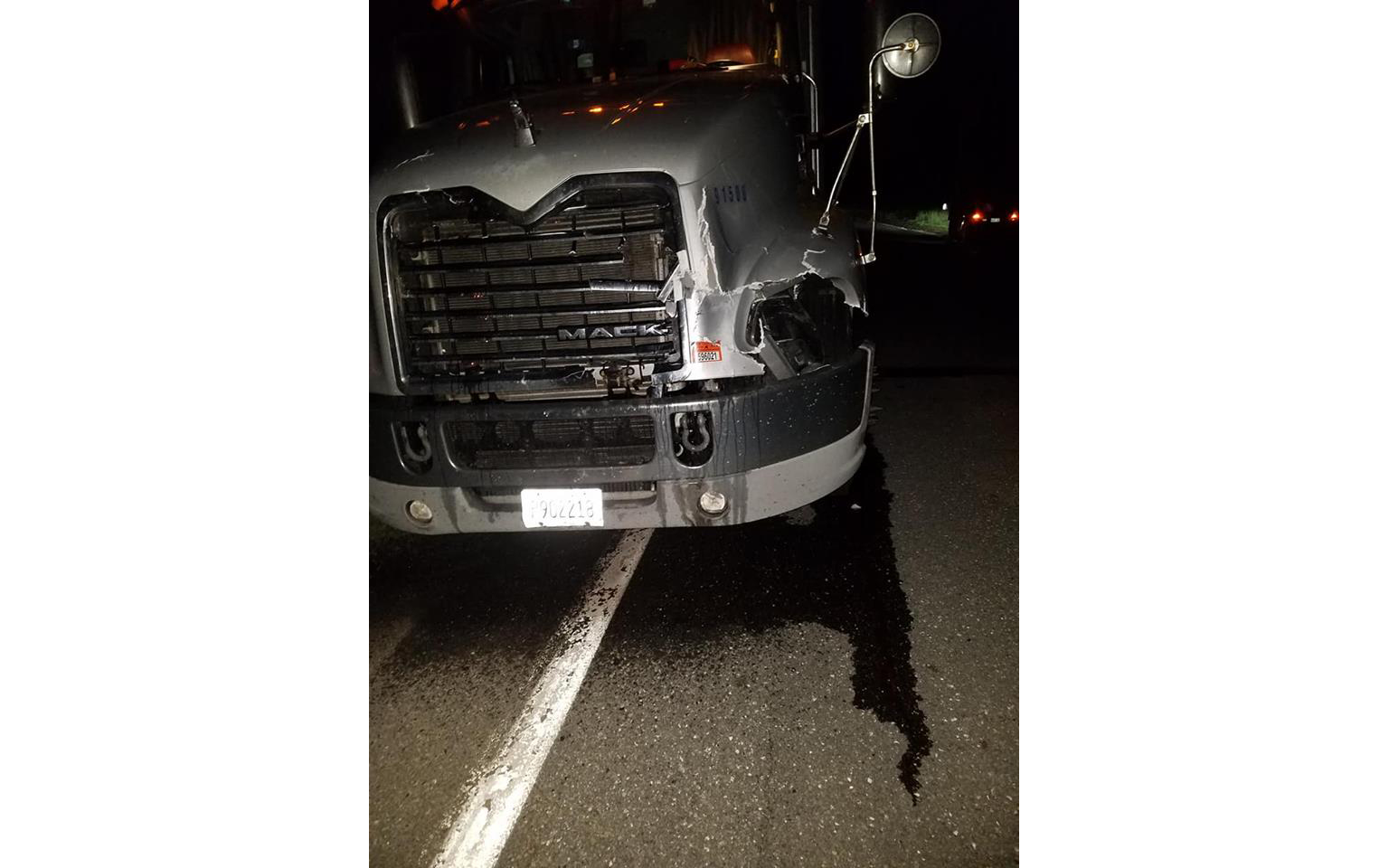
VAN BUREN, Maine — Moose-related accidents are on the rise in the St. John Valley, with at least seven reported to police in the last two weeks. As a result, state and local officials are urging drivers to be more vigilant.
Police said they have dealt with an excessive number of moose-related accidents on Route 1 in a 10-day period. On the stretch between Van Buren and Grand Isle alone, there have been six, with a seventh reported in Madawaska. Luckily, officials said, no drivers or passengers reported serious injuries.
“We haven’t needed any ambulances this year, we’ve been very lucky about that,” said Officer Nathan Chisholm of the Van Buren Police Department.
Out of the seven moose that were hit, five were killed, while two ran off into the woods and were not located after the accidents. According to Chisholm, when a moose is killed in an accident, unless the meat is not salvageable, officials encourage those involved in the accident to take the animal to have it butchered and not let it go to waste.
“The [state game] wardens give us tags to give to people so they can take it legally and won’t be questioned about poaching,” Chisholm said.
According to Chisholm, when a moose is hit and killed by someone driving a Maine registered vehicle, that person is given first choice on the meat. If that person does not want, or cannot take the animal, the Van Buren Police Department runs down a compiled list of folks who might want to claim the meat.
“Unfortunately, if no one claims the meat, then the game warden has to remove [the moose] and dump it in the forest,” Chisholm said.
Some or all of the meat also can be donated to a program called Hunters for the Hungry, which can process the moose to help feed the needy.
Moose biologist Lee Kantar of the Maine Department of Inland Fisheries and Wildlife said that butchers can often clean the meat of a moose killed in a collision and cut away the bad parts.
“June is a high point for movement in young animals,” Kantar said Wednesday. According to Kantar, during the months of May and June, mothers push their young out into the wild, sometimes as old as 2 years, and they wander during the summer months.
Since 2014, state biologists have been capturing and collaring moose to study their behavior and movement. Kantar said that there have been two moose this year that have crossed over the St. John River into Canada — the first time in three years that one of his collared moose have moved across the border.
While officers with the Van Buren Police Department believe that a likely, common cause of excess moose on the roads is probably due to black flies running them out of the woods, Kantar said that is more of an “old wives tale,” but that an unusual dry season might be related to the uptick in the incidents along Route 1.
“We work with [the Maine Department of Transportation] and determine the high accident areas,” Kantar said. He added that the DOT does a lot of work to educate drivers and reduce the number of moose-vehicle accidents.
Calls to the MDOT were not returned this week, but between 2004 and 2013, there were 5,349 moose-vehicle collisions statewide, resulting in 17 fatalities, 1,080 injuries and more than $93.2 million in property damage, according to information supplied to the Bangor Daily News by Greg Costello of the MDOT crash records section.
The DOT also has tried different means of reducing moose-vehicle accidents in high-incident areas such as U.S. Route 1 in northern Maine and Route 161 between Fort Kent and Caribou. Those attempts have included signs that flash to alert drivers they are in an area of high moose concentration and reflectors on poles to catch the headlights of approaching vehicles. The reflectors improve visibility and are intended to help alert drivers when a large animal crosses in front of one.
The efforts have had varying success, however.
There were 119 moose-vehicle crashes on the 56-mile stretch of Route 161 between 2004 and 2008. From 2009, which is when the flashing signs went up, to 2013, that number dropped to 77.
However, according to Costello’s data, the number of moose-vehicle accidents on the section of Route 161 in Connor actually went up after the reflectors were installed — from 63 between 2004 and 2008 to 72 between 2009 and 2013.







